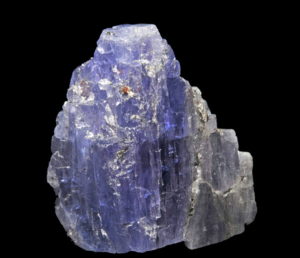Tanzanite has joined the ranks of colored gems relatively recently. The first tanzanite crystal was discovered by Ali Juuyawatu, a Masai tribesman in 1967. Juuyawatu stumbled upon a small cluster of transparent, blue crystals in the Merelani Hills of northern Tanzania. He alerted a local tailor and fortune hunter Manuel d’Souza who quickly registered four mining claims. D’Souza believed he was shown a new sapphire deposit, instead, it was one of the world’s newest gems.
Popularity
Tiffany & Company recognized this new gem’s potential. They became the main distributor and international seller of the gem, also naming it tanzanite, after the country where it was first discovered. Tanzanite became incredibly popular due to its clarity and color which ranged from deep blue to violet to purple.
Description
Technically, tanzanite is the blue/violet variety of the mineral zoisite that belongs to the epidote group. In its natural state, the gem is extremely rare since it has only been found in the Merelani Hill region. When tanzanite forms in a brownish-colored crystal, it can be heated in a furnace to bring a strong purplish-blue color and to make the stone dichroic, reflecting blue and violet. Currently, most tanzanite on the market is heat treated, which has no effect on price and is gemologically undetectable.
The Politics of Tanzanite
The export of rough tanzanite larger than 5 carats was recently banned by parliament in the Minerals Act of 2010. The Act’s main mission is to put the exploitation of Tanzanites wholly in the hands of indigenous Tanzanians. Tanzania will not issue new gemstone mining licenses to foreign companies and the availability of tanzanite will be restricted by the Minerals Act. Unfortunately, tanzanite has not been much of a benefit to the country due to the high rate of mineral smuggling and notorious cases of tax evasion by local miners.

